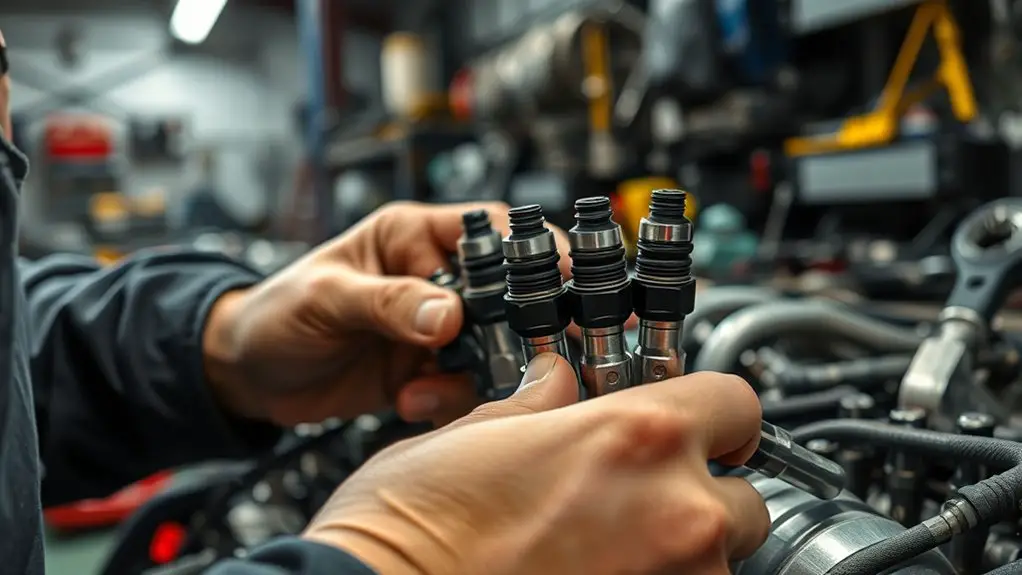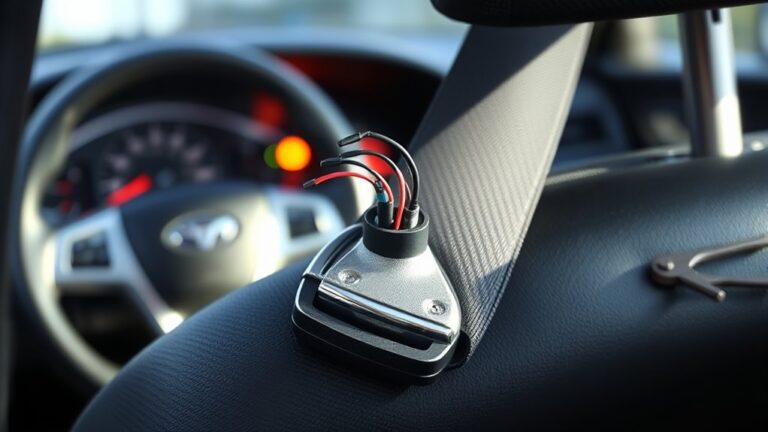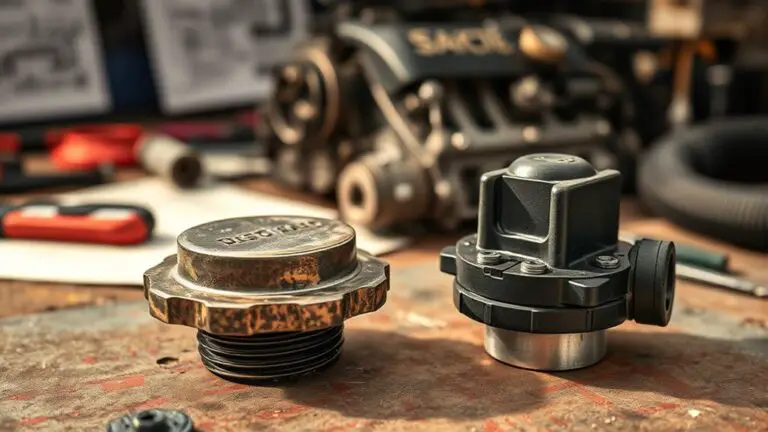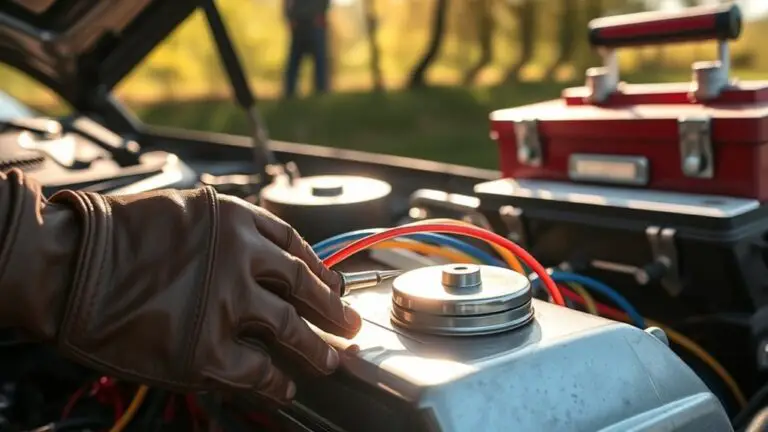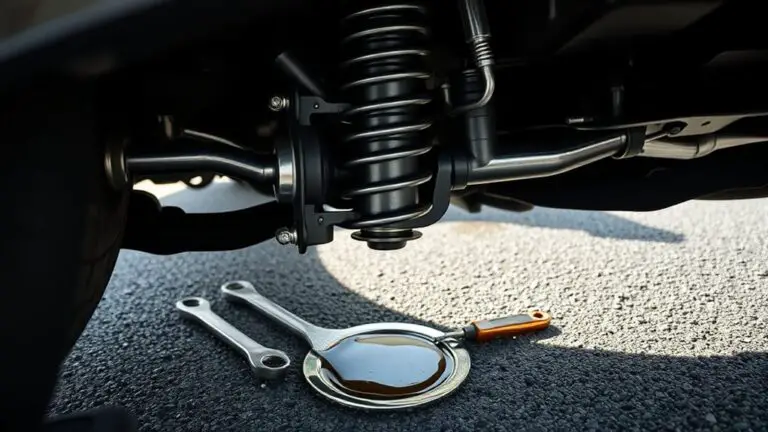Seasonal Maintenance to Prevent Dirty Injectors in Your Work Van
Seasonal maintenance to prevent dirty injectors starts with clean fuel and air, plus steady driving habits. Check filters, pressure, lines, and the pump each season, and replace worn components before they fail. Use quality fuel and stable additives to curb varnish and deposits. Keep intake air clean, monitor humidity and dust, and avoid long idles. Schedule quick 15-minute inspections and a quarterly system review to spot early symptoms. If issues persist, you’ll uncover practical steps further.
What Causes Dirty Injectors in A Work Van
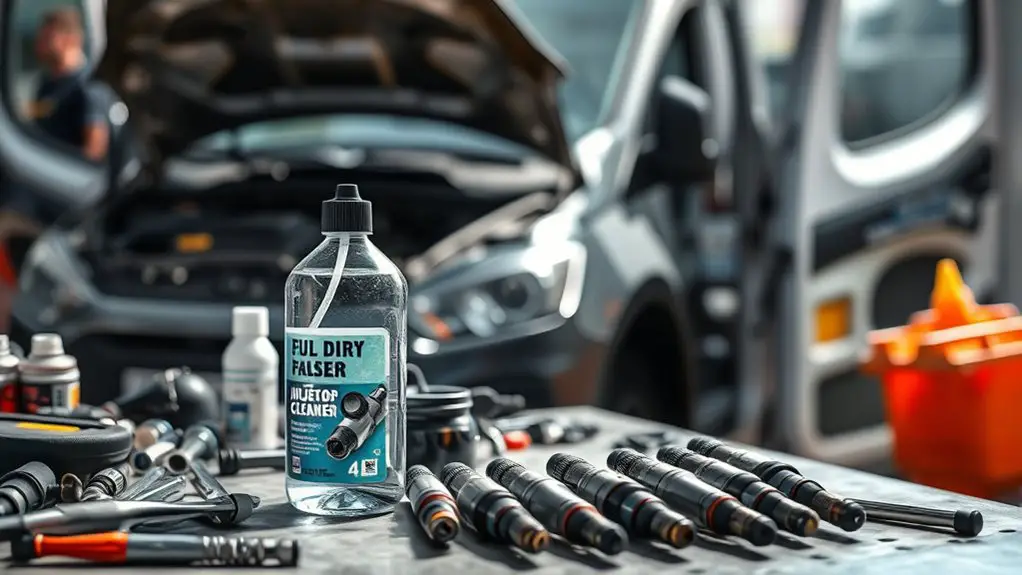
Dirty injectors in a work van are typically caused by contaminant buildup and fuel system neglect. You’re operating in a performance window where precision matters, so understanding the failure path helps you act decisively. Contaminants—dust, moisture, or varnish from inadequate filtration—accumulate in the fuel rail and injector ports, causing imperfect sprays and clogged passages. Over time, injector wear accelerates as metal components scrub against deposits, reducing flow and atomization quality. Fuel quality also matters: cheap additives, variable biodiesel blends, or prolonged storage can leave deposits that alter spray patterns. Maintenance practices that ignore filtration, fuel line integrity, and injector cleanliness invite these problems, undermining combustion efficiency and power delivery. To counter this, follow a disciplined routine: monitor fuel quality, replace filters on schedule, and perform periodic injector cleanliness checks. Early attention to wear patterns and spray consistency preserves performance, improves mileage, and sustains reliable starts under your demanding schedule.
Seasonal Checkpoints for Your Van’s Fuel System
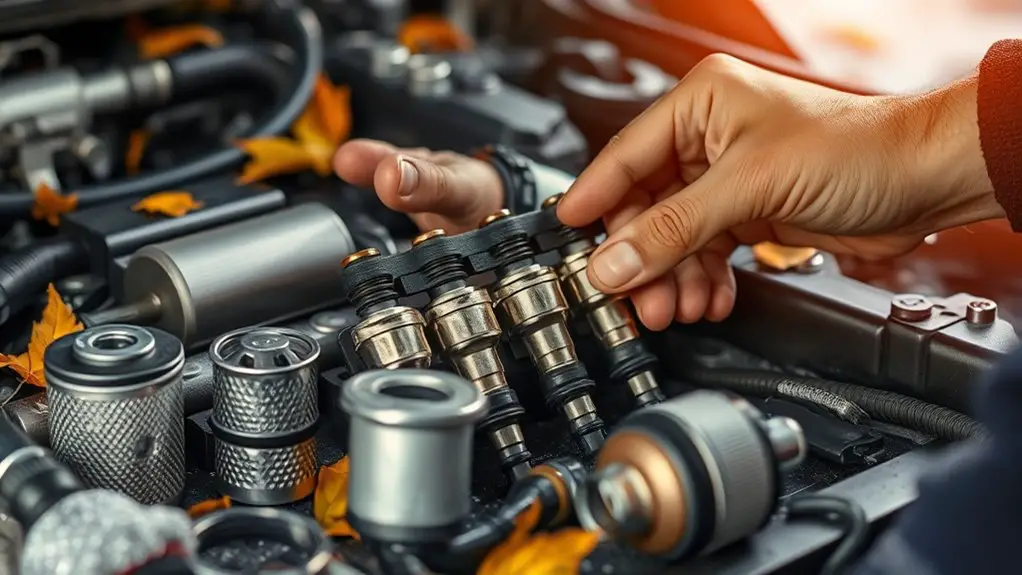
Seasonal checkpoints for your van’s fuel system should begin with a quick diagnostic to set a baseline for the coming months; if you’re in a region with temperature swings, plan to adjust fuel and filtration routines accordingly.
You’ll follow a concise workflow: verify fuel filters, inspect lines for wear, and confirm pump operation. Record readings and compare to previous data to detect trends early. Monitor fuel quality, check for water separation, and test for unusual pressure drops. Implement seasonal adjustments to fuel additives and injector cleaning intervals as needed, keeping emphasis on maintaining steady flow and protection against contaminants. Document every step to build a reliable maintenance trail you can trust.
| Step | Action | Target Outcome |
|---|---|---|
| 1 | Inspect filters | Clean, no leaks |
| 2 | Measure pressure | Consistent delivery |
| 3 | Check lines | No cracking |
| 4 | Test pump | Reliable priming |
How Air Quality Impacts Injector Performance
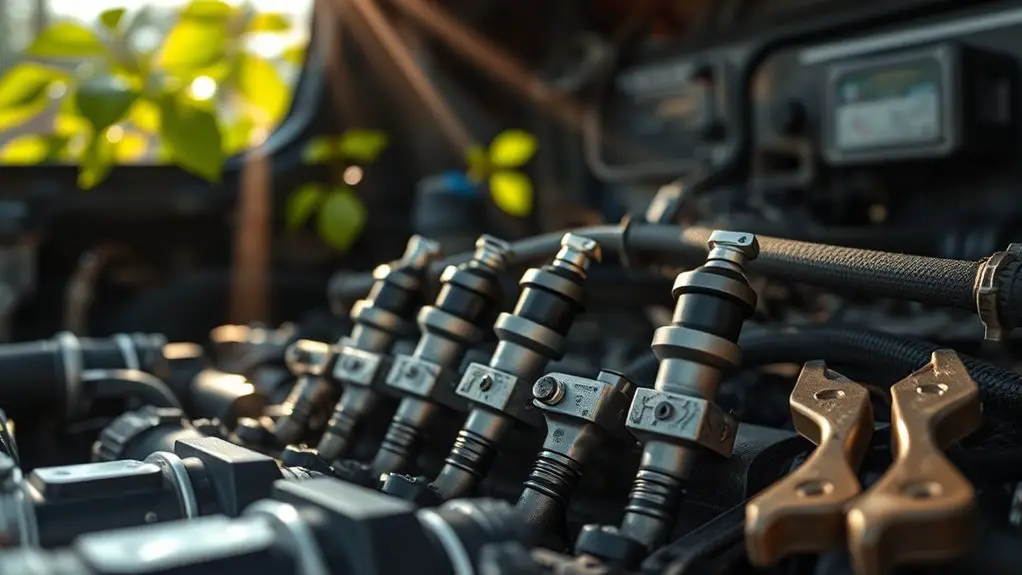
Air quality directly affects injector performance by introducing airborne contaminants that can clog or degrade injectors over time. Filtration and airflow control how clean air reaches the engine, influencing spray quality and combustion stability. Proper ventilation and consistent air quality management minimize contaminants, reducing injector wear and maintaining efficient combustion.
Airborne Contaminants Impact
Airborne contaminants can degrade injector performance by clogging passages, altering spray patterns, and increasing wear on components. You’ll want to identify how airborne pollutants and environmental factors influence your system and adopt targeted controls.
1) Track seasonal shifts in dust, pollen, and smoke that can settle in intake paths and fuel rails.
2) Assess humidity and temperature swings, which affect condensation and contaminant solubility, shifting deposit formation.
3) Schedule inspections after high-wind or fire events when particulates spike.
4) Implement simple filtration checks and clean environments during maintenance to limit ingress.
Filtration and Airflow Role
Filtration and airflow directly influence injector performance by controlling particulate ingress and charge-air quality, which in turn affect spray consistency and combustion efficiency. You’ll optimize filtration systems and airflow management to minimize soot, dust, and moisture entering the intake. Proper filtration reduces injector fouling, while steady airflow supports predictable atomization and power delivery. Design and maintain a simple, robust filtration routine, and monitor air-cleaner resistance as a diagnostic cue. The goal is consistent throughput and clean combustion, not excess maintenance. Use the table below to track materials, cleaning intervals, and airflow checks.
| Item | Action | Interval |
|---|---|---|
| Filter media | Inspect/replace | Monthly |
| Intake housing | Seal check | After service |
| Airflow meter | Calibrate | Quarterly |
Ventilation and Combustion Effects
Ventilation quality directly shapes combustion stability and injector performance; when the intake air is consistently clean and properly conditioned, spray atomization remains uniform and ignition timing stays predictable. You’ll minimize dirty injectors by managing air quality at the source, reducing contaminants that alter fuel-air ratios. Focused ventilation supports steady combustion efficiency, limiting misfires and carbon buildup.
- Ascertain ventilation systems draw clean air from protected paths, avoiding exhaust and dust ingress.
- Monitor intake resistance and filter integrity to maintain consistent airflow.
- Schedule seasonal checks to preserve moisture control and avoid condensation-related deposits.
- Calibrate intake routing for your van’s duty cycle, preserving stable pressure and spray patterns.
Fuel Quality and Additives: Do They Help?
Fuel quality matters and can influence how your van runs, especially across seasonal changes. The effectiveness of additives is debated, so you should assess manufacturer guidance and fuel conditions before use. Consider how seasonal fuel formulations and storage periods impact performance and fuel system longevity.
Fuel Quality Matters
Even though fuel quality can vary, using clean, stable fuel and appropriate additives can help maintain engine performance and fuel system reliability in work vans. You’ll want to understand how to protect injectors and sustain efficiency without sacrificing freedom.
- Use stable fuels from reputable sources to reduce varnish and deposits in the lines and tank.
- Consider targeted fuel additives that support injector cleaning without overdoing the chemistry.
- Monitor storage and seasonal fuel choices to prevent moisture and phase separation.
- Schedule periodic checks for signs of reduced mileage or rough idling, and adjust your plan accordingly.
Fuel additives and injector cleaning play a central role in maintaining atomization quality, preventing clogging, and extending service intervals.
Additives Effectiveness Debated
While additives can influence fuel system cleanliness and injector performance, the effectiveness of these products is topic of ongoing debate. You’ll assess additives by type and expected outcomes, not hype. In practice, consider additive types such as detergents, lubricants, and anti-oxidants, then gauge their relevance to your engine’s design and fuel. Performance comparison relies on standardized testing, real-world mileage, and intake cleanliness observations rather than marketing claims. You should note that some products deliver measurable benefits in dirty or high-mileage scenarios, while others show negligible impact under normal use. Use a methodical approach: document baseline injector behavior, apply a single additive category, and monitor changes over multiple tanks. This disciplined process clarifies whether an additive delivers value for your fleet without overpromising.
Seasonal Impact on Fuel
Seasonal changes can alter fuel quality and additive performance, so you should anticipate variations in octane requirements, volatility, and deposit formation across the year. You’ll need a practical view of how fuel evaporation and temperature fluctuations shape efficiency and injector cleanliness.
- Monitor fuel volatility shifts with seasons to prevent unexpected evaporative losses.
- Align additives with anticipated temperature fluctuations to maintain lubricity and cleaning action.
- Test octane tolerance for seasonal fuel blends to avoid spark knock and deposits.
- Schedule seasonal fuel management checks to minimize varnish buildup and improve idle stability.
In practice, a disciplined approach minimizes dirty injectors. By accounting for fuel evaporation and temperature fluctuations, you preserve flow, reduce maintenance, and sustain performance with intentional, data‑driven choices.
Routine Inspections You Can Do in 15 Minutes
Here’s a concise, methodical 15-minute routine you can perform to catch issues early: start with a quick exterior check for obvious damage, leaks, or loose components, then move to tires and lights, verifying tread depth, pressure, and all signaling devices are functional. In short, you’ll scan for wear, listen for abnormal noises, and confirm fluid levels are on target. Next, run through under-hood checks: belts, hoses, and clamps should be intact with no cracking or looseness. Finish with a quick interior glance at gauges, warning lights, and pedals to guarantee safe controls and no abnormal smells.
| Step | What to Check | Objective |
|---|---|---|
| Exterior | Damage, leaks, loose parts | Early problem spotting |
| Tires & Lights | Tread, pressure, signals | Safe operation |
| Under-hood | Belts, hoses, clamps | Prevent failures |
| Interior | Gauges, smells | Confirm system health |
Cleaning and Servicing Schedule for Busy Tradespeople
How can you keep a busy van fleet running smoothly without wasting time? A disciplined cleaning and servicing schedule minimizes downtime and injector fouling. Plan around cycles: daily quick checks, weekly detail, monthly system review, quarterly overhauls. Use defined cues to trigger actions and track compliance.
- Cleaning techniques: wipe interfaces, cap reservoirs, and vacuum vents; document residue observations to identify contamination sources.
- Servicing tips: rotate filters, inspect fuel lines, and verify ECU logging thresholds; log findings for trend analysis.
- Scheduling cadence: lock fixed windows, batch tasks by vehicle, and allocate recovery time for unexpected delays.
- Quality control: perform post-service tests, compare baseline metrics, and update your maintenance playbook with lessons learned.
Safe Driving Habits to Protect Injectors All Year
Safe driving habits protect injectors year-round by minimizing fuel contamination and engine stress. You’ll reduce dirty injector risk by steady speeds, smooth acceleration, and avoiding prolonged idling. Maintain consistent idle when stationary to prevent injector varnish buildup and fuel drainback. Plan routes to minimize stop‑start conditions, and keep tire pressure and drivetrain alignment within spec to lower parasitic loss and fuel dilution. Use the vehicle’s fuel-saving features appropriately, and use quality fuel from reputable stations to limit contaminants.
| Condition | Action | Benefit |
|---|---|---|
| Steady speeds | Cruise control where safe | Reduces surges, cools combustion |
| Gentle acceleration | Ease into throttle | Lowers fuel wash and injector stress |
| Minimal idling | Turn off engine when possible | Cuts fuel dilution, saves fuel efficiency |
| Route planning | Favor efficient paths | Shortens engine runtime, preserves injectors |
| Fuel quality | Use trusted suppliers | Protects from contaminants, improves mileage |
When to Seek Professional Help for Injector Issues
If you notice persistent symptoms like rough idle, misfires, reduced power, or unusual fuel smells, it’s time to contemplate professional injector diagnosis. You don’t have to navigate uncertainty alone—targeted injector diagnostics can pinpoint faults before they escalate. Professional servicing guarantees safety, efficiency, and long-term reliability for your van’s drivetrain.
If rough idle or misfires persist, seek professional injector diagnostics for precise, data-driven solutions.
- Assess symptom consistency and severity to determine urgency.
- Schedule a diagnostic appointment with a qualified technician who specializes in injector systems.
- Expect a controlled test plan, including pressure checks, flow testing, and electrical circuit evaluation.
- Review findings together and decide on remediation, parts replacement, or cleaning, based on data-driven results.
Frequently Asked Questions
How Do Seasonal Temps Affect Injector Clogging Risks in Vans?
Temperature fluctuations raise injector clogging risk in vans, especially during extreme season shifts. You’ll see varnish buildup and fuel varnish from inconsistent fuel temps, moisture, and particulate ingress. To mitigate, perform regular injector maintenance, inspect seals, and use quality fuel and cleaners. Monitor coolant and fuel temperatures, allow gradual warms, and avoid sudden engine starts in cold when possible. Consistent maintenance minimizes deposits, improving spray patterns and combustion efficiency across seasons.
Can Humidity Change Fuel System Performance in Winter Driving?
Humidity can change fuel system performance in winter driving. You’ll see denser air, potential condensation in lines, and altered fuel vapor pressures, which may affect injector spray and starting reliability. Humidity effects can worsen cold-start hesitation and fuel efficiency if moisture causes phase changes or jelling in older systems. You should monitor moisture, use appropriate fuel additives, and guarantee seals stay robust so performance stays steady even as humidity fluctuates.
Do Biannual Injector Cleanings Prevent Seasonal Deposits Effectively?
Biweekly or biannual injector cleaning can help reduce seasonal deposits, but it’s not a guaranteed fix for all fuel-system issues. You should treat injector cleaning as part of a broader maintenance schedule, not a standalone solution. Regular maintenance schedule alongside proof-of-performance checks guarantees you maintain peak spray patterns. You’ll want to document results, monitor fuel quality, and adjust intervals based on engine response, fuel type, and operating conditions.
Is There a Best Time of Year to Replace Fuel Filters?
Yes—you should replace fuel filters when you notice replacement indicators, not by season. Track fuel filter longevity and symptoms like reduced or irregular idle, power loss, or harder starting. Check your van’s service manual for recommended intervals, but be prepared to swap sooner if you run dirty fuel or see debris. Regular inspections help you avoid injector issues later, keeping performance consistent while preserving freedom to work hard.
Are Diesel vs. Petrol Injector Issues Season-Specific?
Yes, diesel and petrol injector issues aren’t strictly season-specific, but symptoms can vary with temperatures and fuel quality. You’ll notice diesel maintenance demands tighten seals and clean injectors more in cold starts; petrol performance shifts with heat and ethanol blends. Diagnose by checking rail pressure, injectors, and related sensors in both systems. Schedule regular tests, use quality fuels, and maintain filters. You’re aiming for consistent fuel atomization, efficiency, and freedom from roadside surprises.

